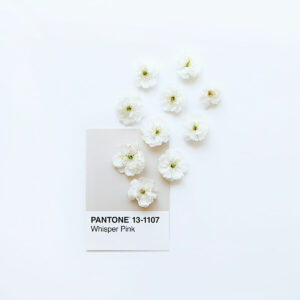by Amber Brooks and Laurie Baines
Branding isn’t just a nice to have and here’s why: people make decisions based on psychological factors and branding has everything to do with psychology. Every single symbol, message, action, behavior, and even inaction of a brand contributes to the belief a person has about it.
Even the colors connected to a brand will impact how a person responds to it. Therefore, the colors connected to your brand need to be strategically selected based on the values of the brand and how audience members should feel about it.
You’ll want to make sure you’ve completed the strategic brand development work first to understand your target market, clarify your brand’s character and values, and core purpose, otherwise you’ll have misdirected opportunities. This includes understanding the importance of the psychology behind colors when embarking on brand strategy.
What Is Color Psychology?
Color psychology refers to the connections between specific colors and emotions, thoughts, and behaviors that come up when someone comes into contact with them. The more prominent a color, the more that color will have an impact on the person encountering it.
The perfect example of this is when you observe art. You’ll be met with certain emotions or thoughts impacted by the color, hue, saturation, light, dark, and balance of color of what you are viewing.
The Importance Of Brand Colors
Many people understand the importance and psychological implications of messages and copy. But, often, the psychological impact of color usage is something that gets overlooked.
Ben Burns, from the Futur, says that, “The colors you select for your brand set you apart and they are vital to invoking emotion. They are a key factor in differentiation and brand recognition.”
Brand colors are important because they signal certain thoughts and emotions, which in turn impacts the belief people have about a brand and even their buying decisions. Both Color Psychology and Co Schedule have great explanations of the use of color, for different reasons.
The colors people encounter when they see your brand will contribute to how they receive it and what they believe about it. It has nothing to do with judgement or assumption, though. There are deeply subconscious connections between each color and the things people think of when they see them.

For example, red can mean danger. But, it can also mean power, energy, and strength.
Blue can mean sadness, but it can also signal thoughts around trust, compassion, and peace.
Every color has positively attributed emotions and thoughts, as well as negative. But, using them appropriately in combination with your messages and interactions will help your audience understand what you represent, what your values are, and connect with those who it’s meant to.
What Brand Colors Mean
Many brand agencies and marketers will use color or explain its use as a manipulation tool. But, marketing can be done effectively and authentically, without manipulation.
Instead of thinking of brand color use in terms of what you can get out of it, think of it as a tool for effectively communicating and connecting with your audience. Color should be used as a force for good and a communication tool for authentically existing in the world.
Once you are clear on your values and unique brand character, your brand strategist will be able to select (or refresh) your brand colors so that they both represent what your brand stands for and appeal to the emotions of your target market.
Getting Support in Choosing Brand Colors
Branding is a specialized skill. If you’re not trained in branding strategy, you should leave selecting brand colors to professionals who can help you put your best brand forward. The right consultant will walk you through a process to ensure the brand visuals you have represent your vision, attract your ideal clients and create a presence to showcase the power of your brand. .
There are many visual brand strategists available, in nearly any niche you could imagine. Make sure to choose a consultant who will do the foundational work of getting to know your brand (and helping you define it if you haven’t done so already), getting to know your audience, and developing a brand that is true to you and attractive to your audience.
If this is something you need help with, book a call with us and let’s talk about where you are and where you want to be. You can work with Creative Director Laurie Baines through her company, Creative Insights if you’ve already done the foundational work and are ready for visuals.







